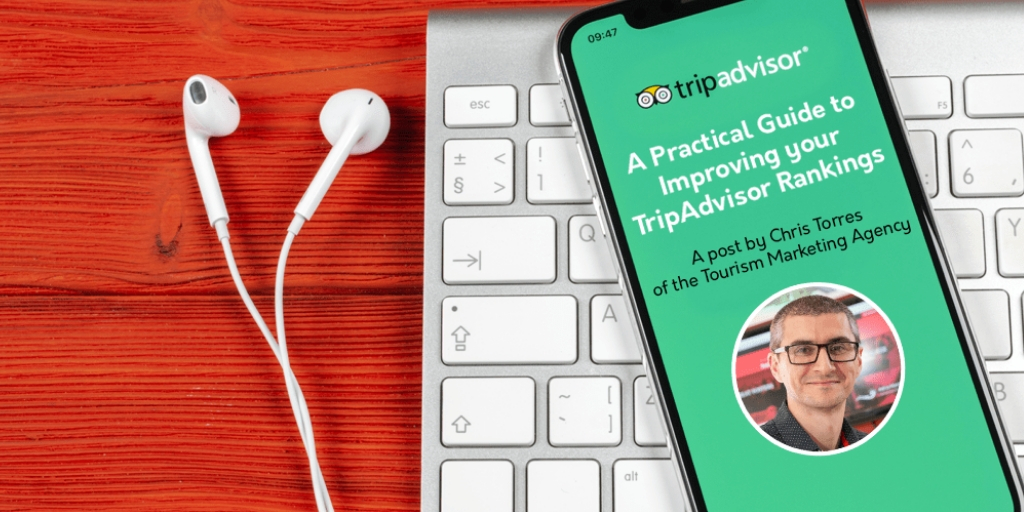In this post, digital marketing expert Chris Torres - director of the Tourism Marketing Agency - offers some key insights into TripAdvisor’s complex ranking system. He’ll run through some key factors that determine your ranking - and how to make sure it’s as high as possible! You may already know that TripAdvisor influences over 10% of all tourism spending. Every month, 455 million people use the site to find and book hotels, restaurants, experiences, and tour services. If your company ranks higher on TripAdvisor, you are guaranteed to receive more business. It’s one of the best ways to make your business more visible than your competitors. It can get confusing out there. SEO, social media, online reviews: it seems like everywhere you look there’s a another “guide” you just can’t get your head around. But this information is key if you want to market your company in the best way possible online.That’s why I’ve created this clear and simple rundown of how your TripAdvisor ratings work. Plus, you’ll find a few tips on what to look out for to make sure your rankings aren’t slipping.
The system is smart - don’t try to manipulate it
You know user reviews are the biggest ranking factor on TripAdvisor. The whole platform works on the premise that good services inspire good reviews from customers. The 600+ million reviews are the biggest determining factors when TripAdvisor’s algorithm ranks your tour, activity, or rental service. However, there are more ranking factors beyond reviews.In the past, new businesses used to jump to the top of the rankings when they received an influx of reviews. Other businesses saw this and tried to rig their reviews to shoot themselves to the top of the rankings. TripAdvisor noticed this, and knew that if the rankings could be manipulated, their platform couldn’t be trusted. They have since changed their algorithm to prevent ranking manipulation. What should you take away from this?It’s getting gradually harder to unfairly manipulate TripAdvisor’s rankings. So don’t even try it. You may even get a $3 million fine if your activity is seen as inherently misleading! Don’t waste time trying to trick TripAdvisor; put your efforts into earning your good ranking.
How does the TripAdvisor algorithm work?
TripAdvisor won’t let us fully understand how its algorithm works. But, we do know that it ranks your business based on three things: the quality, recency, and quantity of your reviews. Let’s look at each aspect in turn, and see why your reviews might be doing better or worse than you expected.
Quality
It sounds obvious: the more 4- and 5-star reviews you have, the better your ranking will be. However, the quality of your reviews is also based on word counts. A longer review is viewed as more beneficial than a shorter review. This is because a longer review provides more detail on the experience. If your guests are taking the time to write reviews longer than one word, it shows they have meaning - and TripAdvisor will deem them of higher quality.
Recency
How recently a review was posted is also important. New businesses can’t jump to the top of the rankings with new reviews anymore. But it makes sense that recent reviews tell TripAdvisor that your service is good right now. Not good two years ago. Only having old reviews may make it seem like your business has reduced in quality. It’s vital you’re getting up-to-date reviews to let TripAdvisor know you’re still doing a good job!
Quantity
Yes, the quantity of your reviews is still taken into account - just not to the extent that it once was. As I said before, this change has been made to prevent new businesses from shooting ahead of old, established businesses. It’s still a case of the “the more the merrier”, but you should never sacrifice quality for quantity.
There are no cheap and dirty TripAdvisor tricks
It used to be easier to get to the top of TripAdvisor’s rankings by using cheap and dirty tactics. This won’t work anymore. It may be tempting, but the risks simply aren’t worth it. Instead, make earning good reviews a constant goal for your business. Make sure your staff know how important reviews are to you. Why not empower them to offer free bonuses and discounts as olive branches to disgruntled customers? If you handle it right, it’s totally possible to transform a customer’s negative experience into a positive review!Check out this example below from San Francisco tour operator Vantigo:

Even though the customer didn’t actually get to go on the tour, they still ended up giving a 5-star review because of how the company handled the situation. Awesome! It’s also important to keep a constant eye on your TripAdvisor reviews. If you spot a bad review, it’s good to either reply or get in touch with the user to ask if you can make amends. Sometimes the user won’t be interested - but they often are, and your bad review could be turned into a good one.The upshot of all this: TripAdvisor is fair - and trying to be even fairer. It’s also providing constant updates to its algorithm over time. Knowing this, the best thing you can do is focus on the quality of your product or service. It’s the only surefire way to get those 5-star reviews rolling in and see your ranking soar!Want more tips from Chris? Keen to learn more about digital marketing relevant to the tourism industry? Why not sign up for his FREE 12 part marketing guide here!











